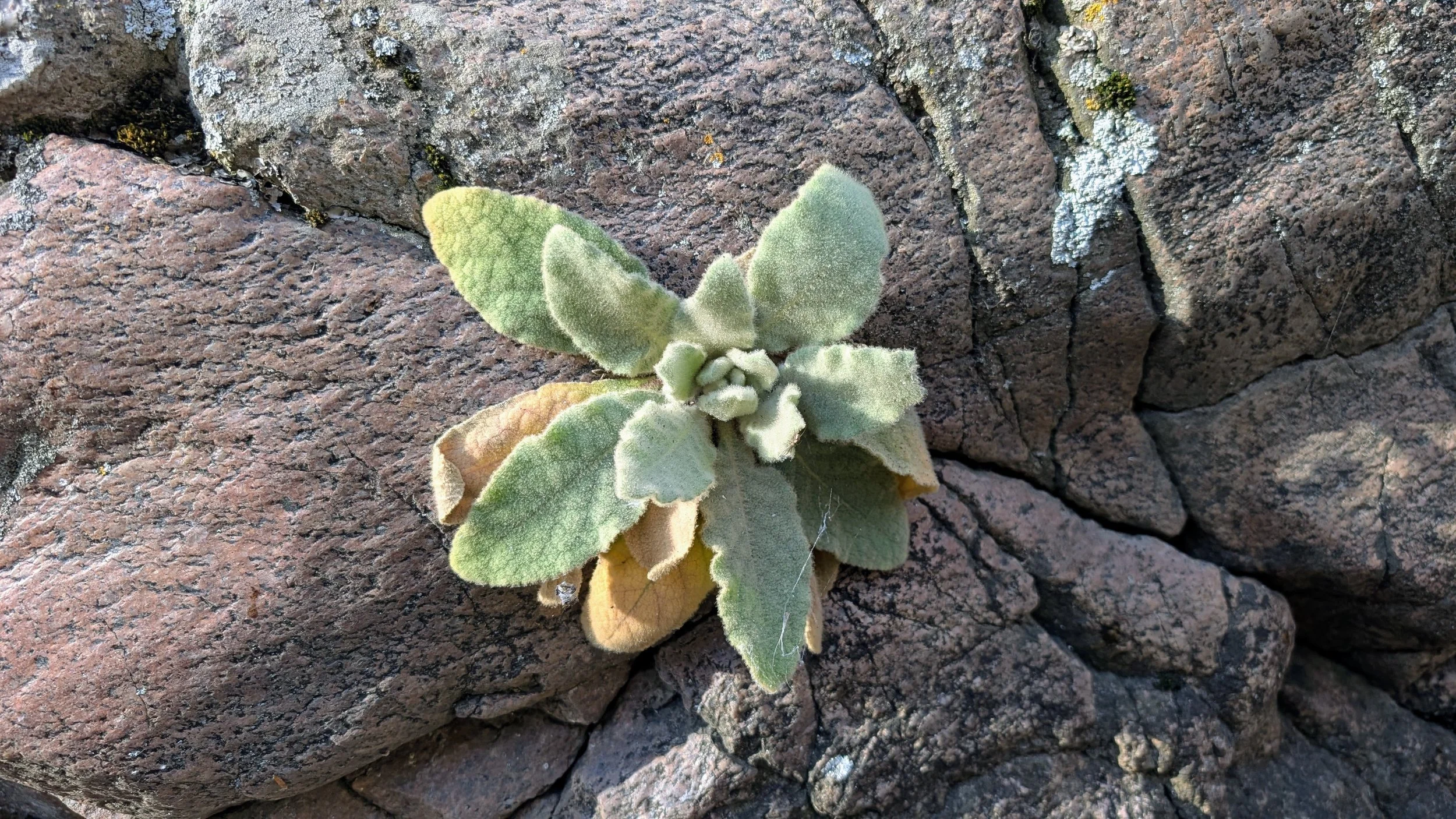Mullein
Spotlight on a Plant Ally
Verbascum thapsus
Like many of you, I've been spending some time this month in my garden, pulling weeds and cooing over new growth from my native flowers. One of the most plentiful (and useful) of these weeds is Mullein (Verbascum thapsus). Mullein grows readily in temperate climates, often in disturbed areas like roadsides, pastures, meadows, forest clearings, and abandoned areas. I remember a few years ago biking at Heil Ranch Open Space after the Calwood fire through stands of Mullein that towered over my head, seemingly out of some prehistoric time. It is often one of the first plants to establish itself after fires and while not a native species, can play an important role in stabilizing and regenerating soil.
Native to Europe, northern Africa and Asia, Mullein was introduced to North America several times throughout history due to its numerous medicinal qualities. As is the case with many invasive weedy species, immigrants brought mullein to this new world because of their ancient relationship with the plant. Mullein flowers infused in oil sooth ear and muscle aches. Mullein root extracted as a tincture or liniment helps lubricate spinal vertebrae, fascia, and joints (possibly due to its affect increasing synovial fluid). A mullein leaf heated in water can be applied directly on the skin for pain relief. The leaves are also well known for soothing coughs, moistening the lungs, and loosening mucus.
If you'd like to wild-craft this herb, gather the roots and leaves of first year mullein (when it's a rosette, not having a long stalk, which develops in the 2nd year of the plant's life cycle). Chop up the fresh roots and then dry them. You can also dry flowers and leaves to store them for future infusions. Here at Honorable Harvest, we carry a mullein tincture and dried mullein leaves. To read more about Mullein, its uses, how and where to gather and use it, see our various books on herbs in Colorado and the western states.
IMPORTANT NOTES - mullein seeds are toxic so don't eat them. Some people are sensitive to the dried hairs of leaves so strain your mullein tea in a fine strainer, like a tea bag or coffee filter. Because mullein is invasive and a List C noxious weed, it is often sprayed with herbicide. Be careful where you gather this one. Avoid plants that are deformed or yellowing and those beside the road.

